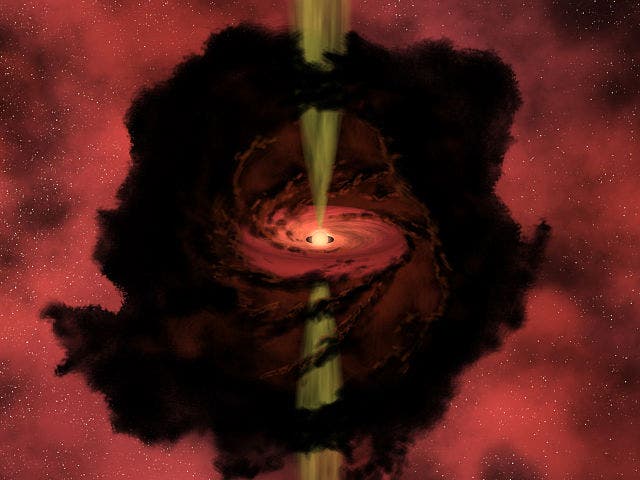Astronomers have come across something truly amazing. Observations have surprised a protostar – a star in the making – in its earliest stage ever witnessed. The stellar fetus has only accreted about 20 percent of the matter surrounding it and has yet to begin nuclear fusion.

Theories regarding star formation are rather well established, however there are many gaps in empirical observations. Scientists still can not tell for sure if their theoretical models match the processes that occur in nature, mostly because spotting stars from the very first dust clouds to their final stages of formation when they become bona fide stars is very difficult.
The protostar in question, dubbed L1527, is only 300,000 years old at the time of observation, and astronomers speculate it could be even younger, making it the youngest ‘baby star’ yet encountered. The protostar is 450 light-years away from Earth, lying in the constellation Taurus. Its close proximity allowed for fine resolution observations of the protostar’s formation process via the Atacama Large Millimeter/submillimeter Array (ALMA) telescope in Chile.
“There’s five times more material surrounding it that could be
incorporated in [the star],” said John Tobin., a Hubble fellow at the National Radio Astronomy Observatory in Virginia. “There is still a lot of room to grow, so to say.”
A new star will be born, hopefully
Typically a star forms when a dust of cloud reaches a critical mass and collapses under itself to form a central core. In time, as the core emits infrared light heating its surroundings known as the “envelope”, more and more matter is accreted and energy is released. In L1527, 90 percent of its energy comes from material landing on the surface of the protostar, while the remaining 10 percent comes from the proto-star itself.
“There is a rotationally supported disk around this protostar,” said Tobin, adding it’s a “key element” in building planets. “It lets the material hang out long enough for the planet formation process.”
It’s worth noting however that not all protostars go on to become stars.
Currently, L1527 is classed under Stage 0 on the stellar evolution scale. By comparison the Sun is a middle-aged matron, at 4.6 billion years of age. The disk surrounding it is about 180 astronomical units (AU) in diameter – an AU unit is the average distance from the Earth to the Sun – comparable in size to our Solar System.
“We want to get a more detailed view of the structure of the rotating disk,” Tobin said, adding, “We’re also trying to look at more young protostars to find more disks like this. You can get a big picture view of everything that’s going on.”
Findings were reported in the journal Nature.
[via Ars Technica]
Was this helpful?



